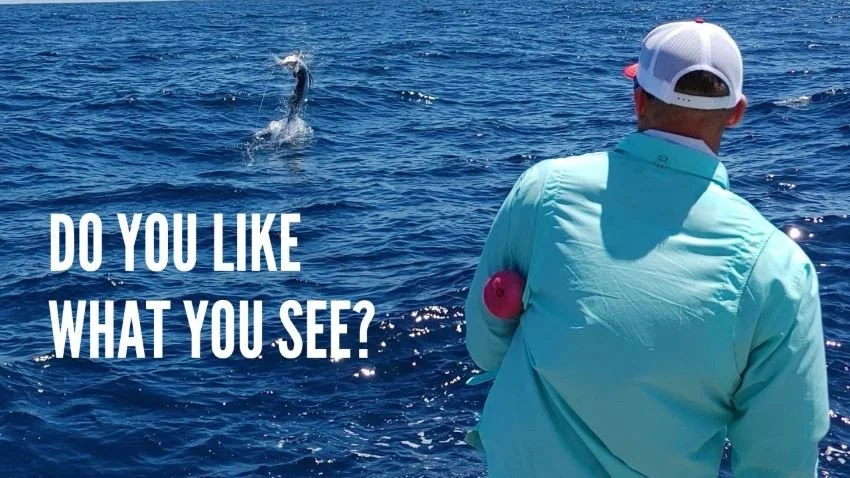See Better, Catch More Fish
All five senses play varying roles in your fishing success at different time, but your eyesight is particularly critical. By really staying focused on the visual cues all around you, It’s possible to substantially increase your catch rates – the flick of a baitfish might give you a clue, or you might spot a hard-to-see bedding fish, or get clued in to a sailfish in the spread in time to bait it in. Even if you don’t notice the fish itself, you might see a current seam or some other indicator that keys you in on an otherwise-missed critical factor.
Obviously, having good eyesight is helpful. Ted Williams was often credited with being a great hitter, angler and fighter pilot because of his exceptional sight. At the same time, I’m always reminded of our naturalist guide Daffy in Zimbabwe – he wore super-thick glasses but could nevertheless spot and distinguish various types of termites at a hundred yards away. So absent improving your abilities through Lasik or corrective lenses, you need to make the most of what you’ve got.
Here are six tips on how to see more while you’re on the water:
Go to the eye doctor every year – This is especially applicable to those of us in middle age and beyond. Very few individuals get into their fifties with perfect eyesight. I started to really need a prescription to read at around 45. I’m hoping that now that I’m 54 my sight has stabilized, but I don’t know that for sure. While I’m not sues to wearing or carrying prescription glasses, my need to see details far outweighs any hassle factor.
Get good polarized sunglasses – Find a frame style and lens color that works for you – or several. Everyone’s face and eyes are different. What allows light in for me might be better for you, and vice versa. I like different lens colors for offshore blue water versus super bright days of bass fishing versus overcast days of sight fishing for bass. You might settle on a single frame and lens color, but no matter what don’t skimp on the quality of the lenses. Get something shatterproof and with minimal or no distortion. If you need a prescription, invest in that, too. I now regularly use a pair with readers built-in.
Get adequate rest and sleep – My brain works best when it’s rested – not just adequate sleep, but quality, uninterrupted sleep. Otherwise, I’m more easily distracted or likely to fall into a fog. If your brain has max energy and clarity, you’ll be able to put those resources into the key tasks related to fishing. I tend to miss stuff when I start daydreaming, even if I’m still aiming my eyes in the direction of a key target.
Stop talking (and encourage others to do the same) – There’s nothing wrong with having a conversation while you’re fishing, but if you’ve ever been in the boat with a nonstop chatterbox you know that it can be incredibly distracting. Whether I’m listening to a nonstop patter or talking myself, that’s when I tend to miss stuff visually (as well as not hearing key information from my environment). As an introvert, I’m happy to be in silence for hours, but I realize that may not be everyone’s preference.
Unfocus your eyes – Of course there are times when you have to really dig in and focus on something – a deer at several hundred yards, a bass on a deep bed – but I also think that in fishing sometimes it’s often better not to key in on a single target. When I’m looking for those deep beds, I do better by “unfocusing” my eyes and allowing key clues like a single shell or the flick of a fish’s tail dial me in. Similarly, when looking at a billfish spread, if I focus too hard on one side or one teaser, that’s when I tend to miss the most.
Practice and be aware – I’m not a great sight fisherman, and I may never be one, but I get better every year, and that’s because I work on it. I’ve found the best glasses for my eyes and trained my eyes to find clues for my brain. I’m convinced that I find beds much more easily than I used to through muscle memory. It’s the same with the sailfish spread in Guatemala – I still rarely see the sailfish behind the teasers before the captain (who, in my defense, is looking down on it and has a better angle), but I’ve worked on different angles, different focus points, and really trying to stay intently involved in the process. On the rare occasions when I see one first, I know that it’s working. I just need more practice.







